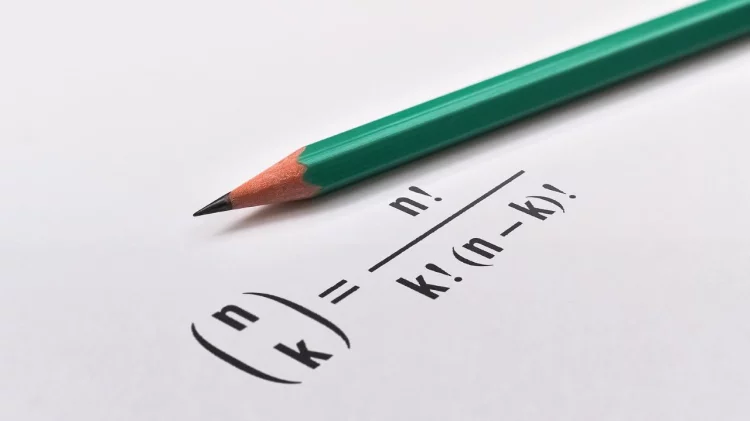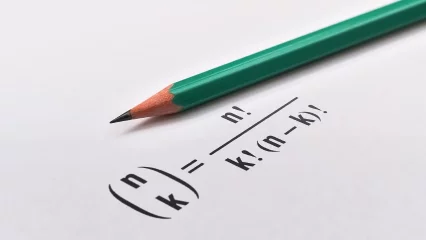If you want to achieve a high score on the GMAT, you will need a mixture of conceptual knowledge, test taking skill, and confidence. Few GMAT questions evoke more consternation than combinatorics problems.
If you have spent any time reviewing for the test, you will know exactly how to identify these problems – they are the ones that ask you to count up all the possible arrangements of individuals and groups in myriad haphazard situations. How many ways can 4 men and 4 women sit around a table? How many handshakes occur in a group of 100 people at a conference?
If you want to earn a 700+ score on the GMAT, you will need to know how to handle combinatorics problems.
What are GMAT combinatorics problems really about?
GMAT combinatorics questions can be intimidating because a) These questions tend to be higher difficulty and tend to show up alongside other tough questions when you are doing well; b) The concepts are often not heavily taught in high school math curricula; c) The logic and wording of these questions can be difficult to parse.
GMAT combinatorics problems are really about the number of ways that items can be grouped or arranged together. At their core is something known as the fundamental counting principle, which means that if there are, say, a possibilities of a certain thing happening, and b possibilities of something happening after that, and c possibilities of a third event happening, and so on, then the total number of possibilities is a*b*c. For example, say a county has 5 elementary schools, 3 middle schools, and 2 high schools. How many different grade school experiences can students have as they progress through the school system? Given that any one student has a choice of 5 elementary schools, we'd multiply that by the 3 middle schools, and then by 2 high schools, for a total of 30 different trajectories.
What if each item in the group affects the others?
In the above example, each event occurs independently of the others, so we simply multiply. But for many questions of this type, particularly when you are dealing with arrangements or groups, each event does affect what happens down the line. As an example, consider a horse race with 8 horses. For the sake of simplicity, we will simply number them 1 through 8.
Let's start with the simplest of arrangement problems:
- How many ways can 8 horses finish the race?
Conceptually, think about it this way: any of 8 horses can finish first. But once we have chosen a horse for that first spot, there are only 7 horses available for second place. That leaves 6 for 3rd, and so on down the line. So, using our counting principle described above, that would simply be 8!
8 7 6 5 4 3 2 1
____ ____ ____ ____ ____ ____ ____ ____
RULE: To find all possible arrangements of n items, use n!
What if there are further restrictions in the problem?
Now let's make things a bit trickier and add some restrictions.
- How many arrangements of top 3 finishers are there in the above race?
In this question, we are asked about a subset of the total number of horses, and the number of ways in which we can arrange the subset. You may have come across the phrase “Order does/does not matter” – since we are dealing with arrangements, the order makes a difference. If, say, horse #5 finishes first, #7 finishes second, and #2 finishes third, that is a different arrangement than #2-#7-#5 and so on.
We can use the above list again, but this time we only care about how the top three finishers are arranged. We do not care about the remaining 5 horses. So, our answer is 8*7*6.
8 7 6
____ ____ ____ ____ ____ ____ ____ ____
If you prefer to use formulas:
RULE: To find all possible arrangements of a subset consisting of r items out of an initial group of n items, use n!/(n-r)! (You may be familiar with the notation nPr, but this will not show up on the GMAT.)
In this case, 8!/(8-3)!
Whenever you have redundancies or repetitions that you do not want to count, you put those in the denominator just as we did with the above example.
What if the problem asks about the number of possible groupings?
The above question considered arrangements – but what if you just want to find out how many groups there are, without arranging the items in each group?
- If the top 3 horses to finish move on to a championship race, how many groups of 3 horses can be chosen to advance to the next race?
In this case, we are not talking about arrangements – whether a horse finishes first or third, it still gets to advance. So, while the problem starts out the same as the others, you do not want to count each arrangement of the group. So you divide through by the number of arrangements of the subgroup.
In this case, our subgroup size is 3 horses – so we would divide 8*7*6 by 3! Whenever you have a redundancy like this, make sure it goes in the denominator, since you are restricting the total possibilities.
8 7 6
____ ____ ____ ____ ____ ____ ____ ____
RULE: To find all possible groups of a subset consisting of r items out of an initial group of n items, in which order DOES NOT matter, use n!/[(n-r)!r!] (You may be familiar with the notation nCr, but this will not show up on the GMAT.)
In this case, 8!/[(8-3)!3!]
REMINDER: To make sure you are not counting redundant outcomes, put the factorial of the subgroup size in the denominator.
The fundamental counting principle and the horse race rules for arrangements and groups are the core of what you will need for combinatorics problems. But many of the more difficult questions will involve a bit more complex logical thinking. One of the most common ways of making a problem more difficult is by adding restrictions, such as “Betsy and Emily always sit together”. For these types of problems, treat the group as a single unit, and be careful to follow the logic.
We hope you have learned a few things about strategies for GMAT combinatorics problems, and good luck as you continue to prepare for the GMAT.
About the Author
Steve Markofsky is a senior GMAT tutor for MyGuru, a boutique provider of online GMAT tutoring and small group GMAT courses. MyGuru was founded in 2009 by an MBA student at the Kellogg School of Management at Northwestern University. MyGuru focuses on helping aspiring graduate school students develop customized study plans and follow deliberate practice principles to improve their scores on the GRE and GMAT.
Have a look at the combinatorics section on GMATclub.com for more resources and practice.

